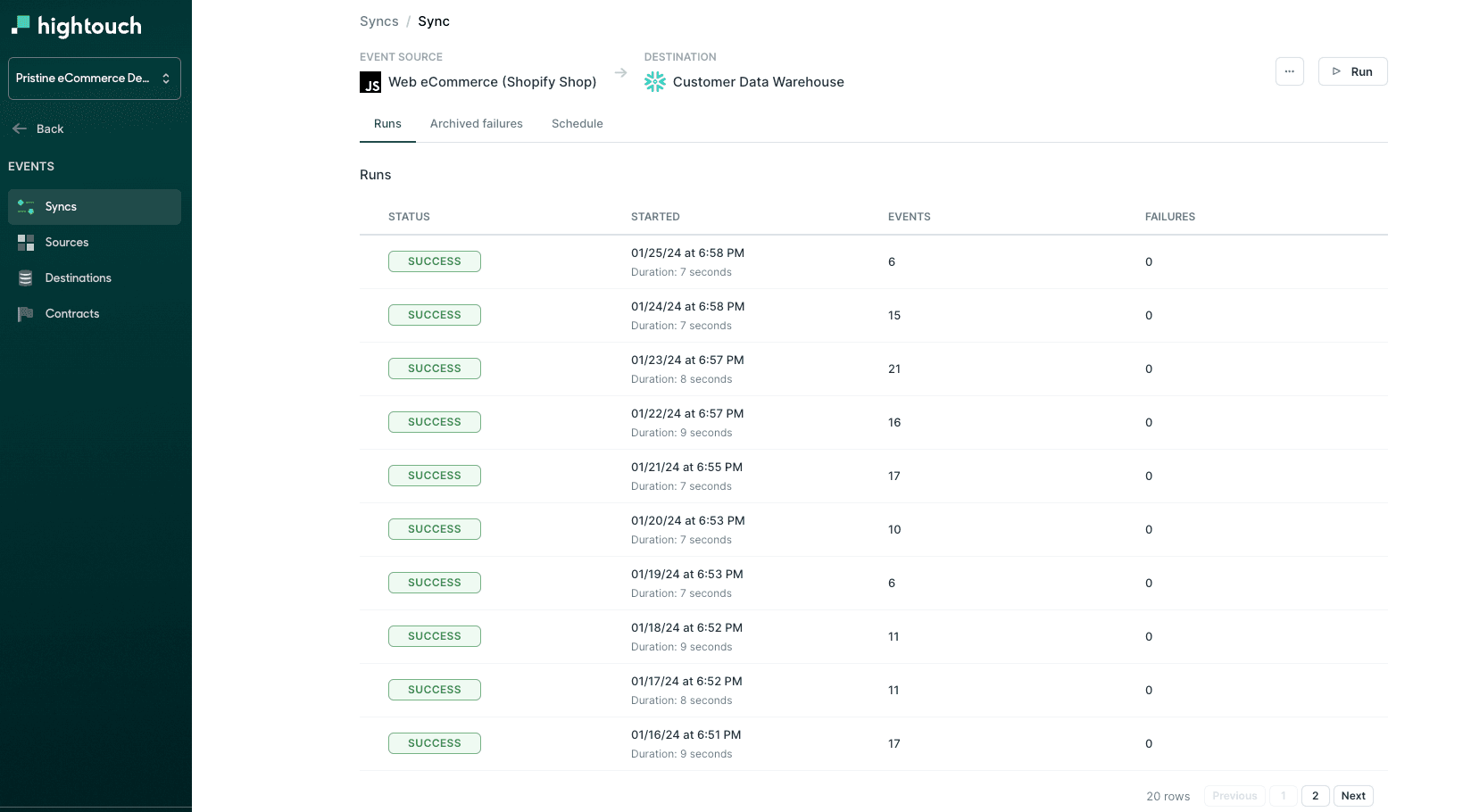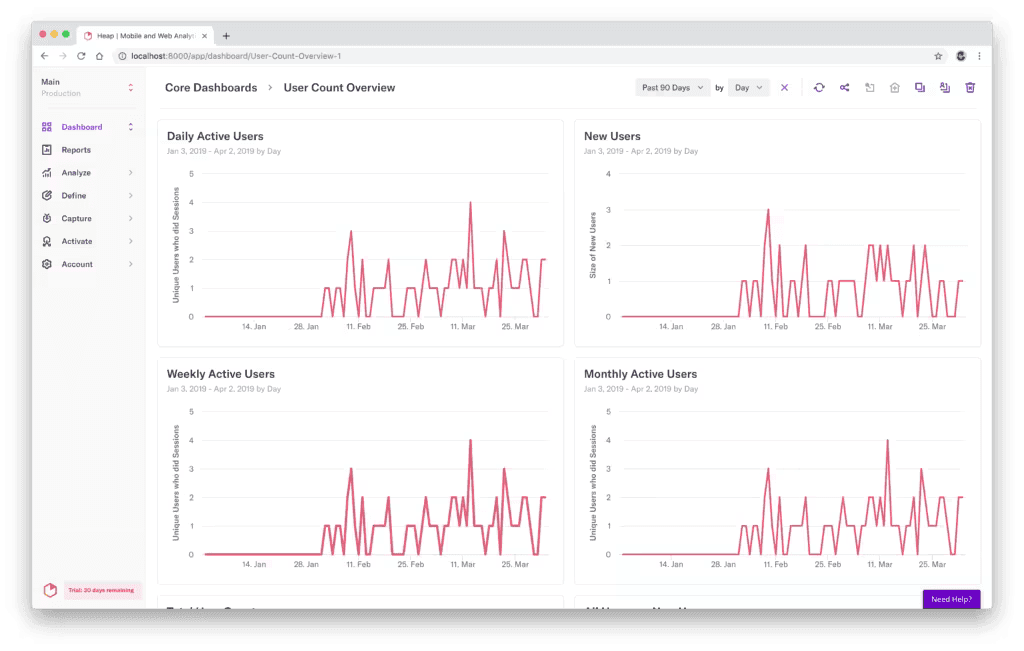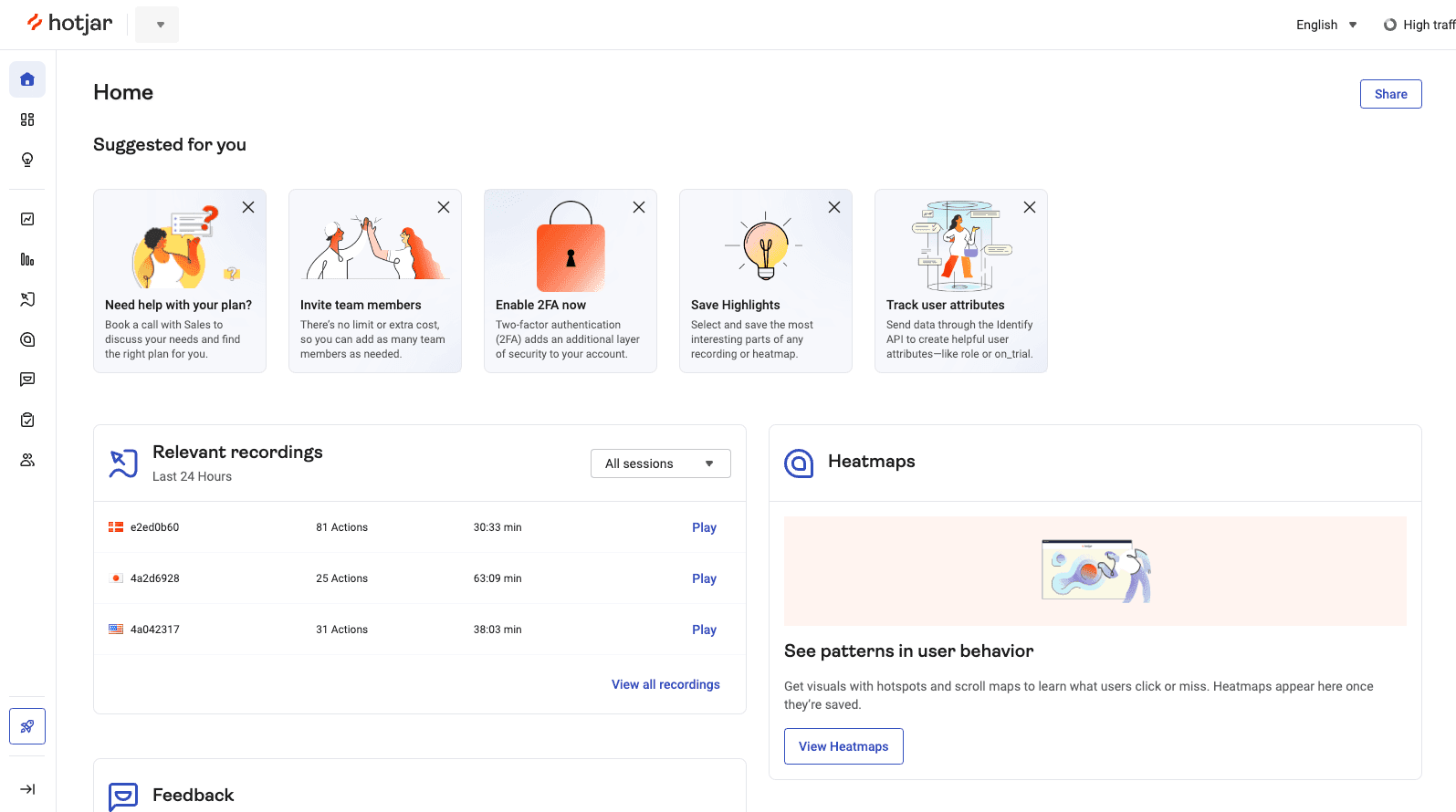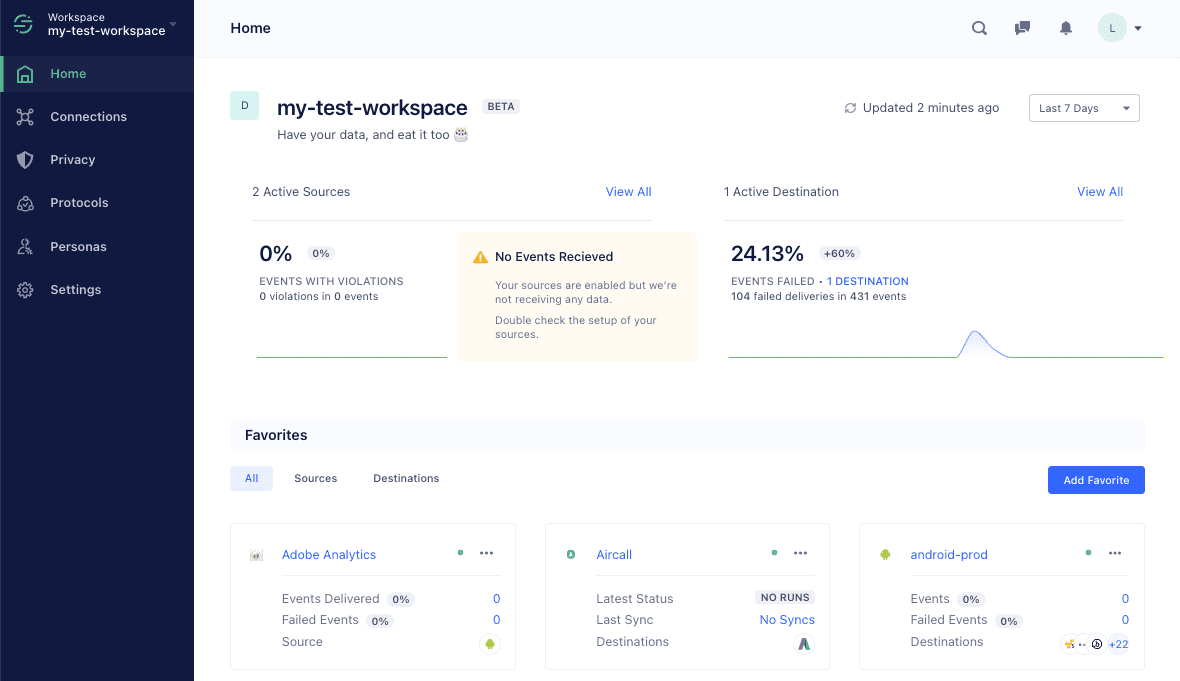What is behavioral data? The complete guide
Learn everything you need about behavioral data and how to leverage it to predict customer behavior and deliver personalized experiences.
Craig Dennis
January 23, 2024
|10 minutes

Every good company tries to do two things: create great customer experiences and drive more revenue. In order to do that, they need to know how their customers are engaging with their product and services, what people gravitate towards, and where people get stuck.
That's where behavioral data comes into play.
In this article, we’ll explore:
- What is behavioral data
- How do you collect behavioral data
- Types of behavioral data
- What are the use cases for behavioral data
- What are some examples of behavioral data tools
What is Behavioral Data?
Behavioral data represents the customer interactions you capture across your website, apps, and servers. These interactions can include page views, new signups, purchases, logins, or any other action a customer might take when interacting with your business or product.
Collecting these customer interactions helps you understand your customers better to uncover hidden preferences and behavioral tendencies to better deliver personalized experiences. With behavioral data, you can also analyze past behavior to predict future trends and ultimately guide your users down a specific customer journey tailored uniquely to their needs and desires.
What is Behavioral Analytics?
Behavioral analytics is the act of collecting and modeling behavioral data. Behavioral analytics aims to reveal insights about how and why users behave in certain ways so you can deliver more personalized experiences to your customers. Where behavioral data is the type of data you collect, behavioral analysis is the art of concluding the data, which leads you to produce actionable insights. Some common goals of behavioral analytics are to improve conversions, retention, and engagement.
How Do You Collect Behavioral Data?
You collect behavioral data through a process called event tracking. Event tracking captures user interactions across web and mobile applications, where each interaction has a timestamp and the specific event, like page viewed, login, purchase, or click, is noted.
Software Development Kits (SDKs) power event tracking. SDKs let you embed code snippets powered by JavaScript directly on your website or app, where you can set up triggers based on the user action you wish to track. The data collected when a user performs an action is stored in your analytics database or data warehouse, ready for behavioral analytics.
Types of Behavioral Data
You can track multiple types of behavioral data, depending on your goals. Some of the most common types of behavioral data include interaction-based data, content engagement data, e-commerce data, and authentication data.
Interaction-based Data
Interaction-based data captures the direct actions users take when interacting with digital interfaces. This can include:
- Clicking a button: Tracks click frequency and locations.
- Scroll depth on a webpage: Tracks user scroll depth.
- Submitting a form: Monitors form completion.
- Length of watching a video: Captures user watch time.
- Hovering over an element: Monitors cursor hover activity.
Content Engagement Data
Content engagement data reflects how users interact with various content types. This can include:
- Viewing a webpage: Tracks time spent on page.
- Downloading a file: Tracks downloads of resources like PDFs or eBooks.
- Searching: Records search keywords and semantic phrases
- Engaging with content: Captures actions like commenting, sharing, or liking content.
E-commerce Data
E-commerce data provides insights into shopping behaviors and trends. This can include:
- Making a purchase: Tracks completed transactions.
- Adding an item to cart: Monitors items added to cart.
- Viewing a product: Measures views and time spent on product pages.
- Abandoning the cart: Identifies items added to cart with no purchase.
Authentication Data
Authentication data tracks user actions related to their account access. This can include:
- Signing up: Records user account sign-ups.
- Logging in: Tracks frequency and patterns of user logins.
- Logging out: Tracks logouts and user session durations.
What are the Benefits of Behavioral Data?
You would want to capture behavioral data in your business for four major reasons.
- Predict customer behavior: You should consider behavioral data as your crystal ball. It can build a customer journey map to see what behavior leads to a particular outcome. Once you have these insights, you can make improvements to prompt the right behavior and send relevant messaging to customers at the right time.
- Understand your customers: Have you ever wondered why customers aren’t buying? Or not engaging with a certain feature in your app? Behavioral data can help you understand the nuances behind their thinking process. The data shows a window into what a customer is doing and what's causing unwanted behavior, like abandoning their shopping cart and failing to complete a purchase.
- Gather customer feedback: Getting customer feedback helps you know where you're succeeding and failing. You can also use behavioral data as a trigger if you have a specific area where you’re looking for real-time feedback.
- Provide evidence: There could be times you want to improve your site or app but need evidence before rolling out a change/update. Behavioral data can provide you with evidence and show if a customer is having difficulty navigating through your website or app.
What are the use cases for Behavioral Data?
Once you have behavioral data in hand, you can use it to power a variety of use cases across marketing, product management, and even data analysis to uplevel the customer experience and optimize the customer lifecycle.
Marketing Use Cases
Marketing teams use behavioral data to unlock a wealth of opportunities for optimization and targeted strategies.
- Find the most valuable channels or campaigns: Behavioral data lets you determine which channels or campaigns perform best by seeing which ones align with your goals the most. With this information, you can reduce spending on underperforming channels and campaigns and divert that money into the more successful ones, resulting in more profitable advertising.
- Create lookalike audiences: Lookalike audiences can help you draw new customers to your business. You can create a high-value audience with behavioral data, such as customers with a lifetime value of over $500. By sending those customers to advertising platforms like Facebook or Instagram, you create lookalike audiences. These customers have characteristics similar to those you provided, which should improve the chance of conversions in your ad campaigns.
- Increase retention: Behavioral data can help you analyze the behavior of your best customers to determine how to increase retention, acquire more loyal customers, and apply those learnings to other customers.
Product Management Use Cases
Leveraging behavioral data can help you enhance the user experience and increase product growth.
- Identify behaviors that lead to reduced churn: With behavioral data, you can identify the small actions that lead to a customer churning over a long period. For example, you could find that customers who aren’t opening emails, never access the help center, and only use one of your features are highly likely to churn. Knowing this, you can develop new processes to combat customer from taking these behaviors or offer incentives to change their behavior.
- Create a customer journey map: A customer journey map helps you reveal the user experience, pain points, and preferences. Behavioral data provides the touchpoints and interactions needed to create a customer journey map. With a customer journey map, you can use it to guide your product development and areas for improvement backed by data.
- Gather feedback based on user engagement: When launching a new feature, you want to ensure it works. Behavioral data can provide instant feedback on what is working and what isn’t. It also gives you the data you need to understand what improvement may be needed and what should be a top priority.
Data Analysis Use Cases
Behavioral data is a cornerstone for insightful, real-time decision-making and customer understanding.
- Collected complete customer data for comprehensive analysis: Behavioral data is often the missing piece of customer data. Collecting first-party data such as name, email address, and location is standard. However, behavioral data enables you to create a Customer 360 for detailed customer analysis.
- Enables data-driven decisions: Because of Customer 360, data analysts can make decisions that are fully formed by user actions and preferences. With all the data available, you can create more effective strategies, have better customer targeting, and predict the future behavior of customers.
- Conduct real-time analysis: Because you capture behavioral data as soon as the event happens, you can perform real-time analysis. Receiving this data nearly instantly means you can respond to customer behavior quickly.
What are Some Examples of Behavioral Data Tools?
You can capture behavioral data by building your own solution, but tools that simplify implementation and include additional features are available.
Hightouch
Hightouch is a Data Activation platform that helps you get customer data to any tool. The platform provides powerful features to collect and resolve customer identities in your data warehouse and sync data to any ad or lifecycle platform.
Hightouch Events helps you collect behavioral data from websites, mobile apps, servers, or any other point of customer interaction and load it into the data warehouse. Hightouch also offers tracking SDKs across the web, mobile, and server-side languages that you can deploy in minutes to start tracking behavioral data across your web and mobile apps.

Heap
Heap is a low-code, easy-to-use digital analytics platform that helps you track user behaviors and allows you a user-friendly method to analyze insights. The platform has a simple-to-implement event tracking system that eliminates the pain of any manual tracking with this Autocapture product. Autocapture automatically tracks all the events without you having to add an event code for each event manually. Heap lets you enrich your event data with additional metadata via APIs, capturing client and server-side events.
One of Heap’s standout features is its retroactive data analysis capability, allowing you to view past data without prior specific event tracking. Its automated data collection saves significant developer time and provides a complete view of the user journey, enhancing decision-making with detailed user data.

HotJar
HotJar allows you to view how a user behaves on a certain webpage by recording their interactions and allowing you to watch their behavior in a recorded session. The toolkit includes heatmaps to visually represent user interactions on a site, session recordings to observe user behavior, and feedback tools like polls and surveys for direct user feedback. The platform can help you deliver a better user experience and gain direct customer behavioral insights.

Amplitude
Amplitude provides analytics for mobile and web platforms, providing insights into user behavior and product performance. The platform offers real-time analytics for immediate user behavior insights and cohort analysis for segmenting users by behavior and characteristics. The Microscope feature allows for an in-depth examination of individual user journeys. Amplitude also lets you personalize user online engagement, provides insights for future trends, and helps you inform product decisions from user behavior data.

Segment
Segment operates as a conventional Customer Data Platform (CDP) focusing on event collection and data utilization. It helps you gather data from various sources such as websites, mobile applications, servers, and cloud-based applications. Once collected, Segment automatically syncs this data to a range of downstream destinations. The platform offers four main products: Connections, Protocols, Unify, and Twilio Engage, enabling effective audience management, real-time data utilization, and integration with business tools for personalized marketing strategies.

Final Thoughts
Behavioral data is crucial for understanding the “why” behind customer actions to help you drive growth in your business. From predicting customer behavior to providing real-time feedback, the insights derived from behavioral data are invaluable. If you want to learn more about collecting your own behavioral data, book a demo to learn how Hightouch can help you start capturing behavioral data today!










